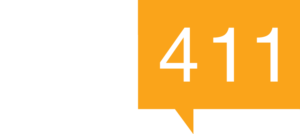AI has already reshaped industries from marketing to finance, and now it’s transforming how employees learn. Generative AI (GenAI) is proving to be a powerful tool in training and development (L&D) by personalizing learning, automating assessments, and closing skill gaps faster than traditional methods. But is it a game-changer or just another overhyped trend? Before adding to the tech stack, HR leaders will need to separate fact from fiction and ensure the tool enhances—not replaces—human expertise in workforce training. Let’s dive in.
The Future of Learning
Traditional corporate training has long suffered from the same problems: content quickly becomes outdated, one-size-fits-all approaches fail, and tracking real skill development is a challenge. Enter GenAI to change all that.
AI adapts content in real time, delivering personalized learning paths based on each employee’s strengths and weaknesses. Employees will engage in interactive, real-world simulations. Instead of pre-recorded videos, AI-driven chatbots and AI-powered coaches guide learners through challenges, providing feedback and tailored follow-ups.
It’s already happening, and it works. At EY, their AI-driven EYQ platform helps employees explore industry trends and ask questions tailored to their roles. ReflexAI reports that organizations using AI-driven training see a 50% reduction in manual training time and a 34% increase in speed to proficiency.
For HR, this means less time spent on outdated e-learning modules and more focus on measurable growth. The ability to scale training while keeping it highly personalized is where AI truly shines.
Where AI Training Goes Wrong
Despite its advantages, AI is only as good as the data it’s trained on. Poorly designed AI models can reinforce biases, oversimplify complex topics, or lack the nuance required for high-stakes training.
AI also can’t replace human judgment in leadership development, conflict resolution, or nuanced decision-making. Employees may game AI-driven assessments, and without human oversight, automated training can fail to address soft skills like emotional intelligence and strategic thinking.
Even AI-driven knowledge assessments, while more sophisticated than simple multiple-choice tests, require expert review to ensure they are evaluating the right skills. AI can flag skill gaps, but HR must be able to interpret and act on the insights.
The risk isn’t just in flawed training materials. Over-reliance on AI can create a culture of automation at the expense of genuine engagement. Employees still need human mentors, real-world collaboration, and guidance that AI alone cannot provide.
How to Integrate AI in L&D Without Losing the Human Touch
The most effective AI-powered training enhances traditional learning methods. HR leaders should approach AI with a strategic, human-first mindset:
- Use AI as a coaching tool, not a decision-maker. AI should help employees identify knowledge gaps and suggest training, but managers and mentors must still guide career development.
- Pair AI insights with human review. AI-generated content should be audited by HR professionals to ensure accuracy, inclusivity, and relevance.
- Keep training interactive and dynamic. AI can power real-world scenario training, but employees should still engage in peer discussions, live workshops, and leadership coaching.
- Ensure transparency in AI-driven training. Employees should understand how AI is shaping their learning paths and have the ability to give feedback and adjust their development goals.
- Align AI training with long-term business goals. AI should do more than just speed up training. It should be part of a broader strategy to develop critical skills, drive innovation, and support workforce agility.
The Future of AI in Workforce Training
AI will continue to revolutionize corporate learning, making it faster, more efficient, and deeply personalized. But it’s not a silver bullet. HR leaders will need to strike the right balance in leveraging AI where it adds value but ensuring the human element remains central to learning and growth.
SOURCES: HR Daily Advisor






